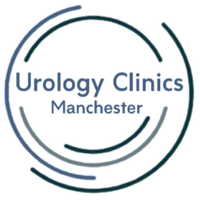Understanding Testis Lumps
Lumps or swellings in the testicles can be concerning, and it’s important to promptly seek medical attention if you notice any changes in the testicular area. While not all lumps are cancerous, some may be indicative of conditions that require medical evaluation and treatment. Here are some potential causes of testicular lumps:
Hydrocele:
A hydrocele is a collection of fluid that can surround the testicle, causing swelling. It often leads to a painless enlargement of the scrotum.
Epididymal Cysts:
Cysts can form in the epididymis, a coiled tube located behind the testicle. These cysts are usually benign and may feel like small, smooth lumps.
Varicocele:
A varicocele is the enlargement of veins within the scrotum. It can feel like a bag of worms and is more common on the left side. Varicoceles are generally harmless but can cause discomfort.
Infections or Inflammation:
Infections, such as epididymitis or orchitis, can cause swelling and pain in the testicles. Inflammation due to infection may lead to lumps or changes in texture.
Testicular Torsion:
Testicular torsion is a medical emergency that occurs when the spermatic cord twists, cutting off blood supply to the testicle. It can cause sudden and severe pain, as well as swelling.
Testicular Cancer:
Testicular cancer can present as a painless lump or swelling in the testicle. It is relatively rare but should be ruled out, especially in cases of new or unexplained lumps.
If you discover a lump or swelling in your testicles, it’s crucial to seek medical attention promptly. Here are steps to take:
1. Self-Examination:
Perform regular testicular self-examinations to become familiar with the normal size and texture of your testicles. Report any changes to your healthcare provider.
2. Medical Evaluation:
If you notice a lump or swelling, make an appointment with a healthcare provider, preferably a urologist. They will perform a physical examination, ask about your symptoms, and may order imaging tests, such as an ultrasound, if needed.
3. Prompt Consultation for Pain:
If you experience sudden and severe pain in the testicle, seek immediate medical attention, as this could be a sign of testicular torsion or another urgent condition.
4. Additional Testing:
Depending on the findings, your healthcare provider may recommend additional tests or procedures to determine the cause of the lump.
Remember that early detection and intervention are crucial for effective management of any potential issues. If testicular cancer is diagnosed, treatment options may include surgery, chemotherapy, or radiation therapy, depending on the stage and type of cancer.
It’s important to address concerns about testicular lumps promptly and not delay seeking medical attention. Your healthcare provider will guide you through the necessary evaluations and ensure appropriate care.
Book your consultation here to see how our team can help with Testis Lumps.





0 Comments